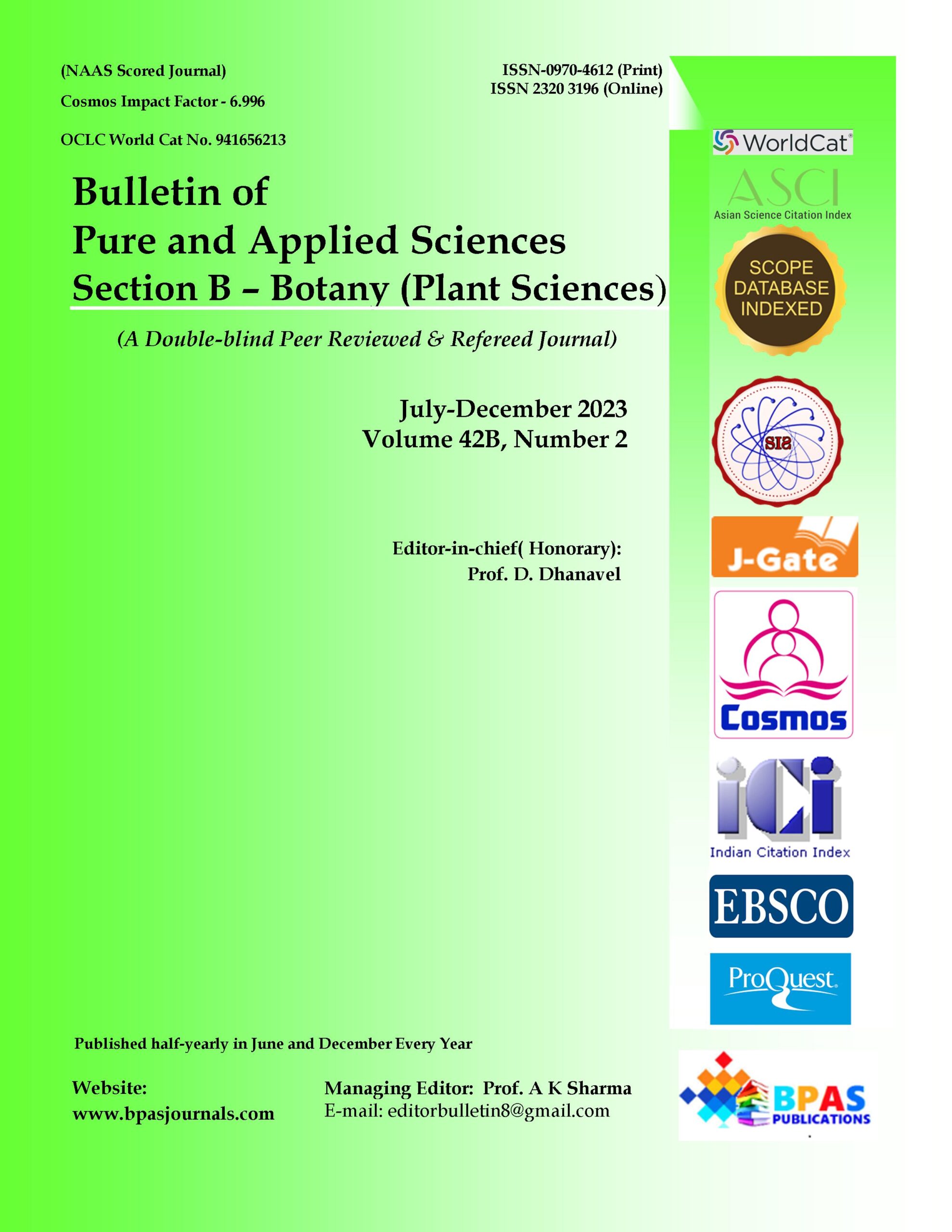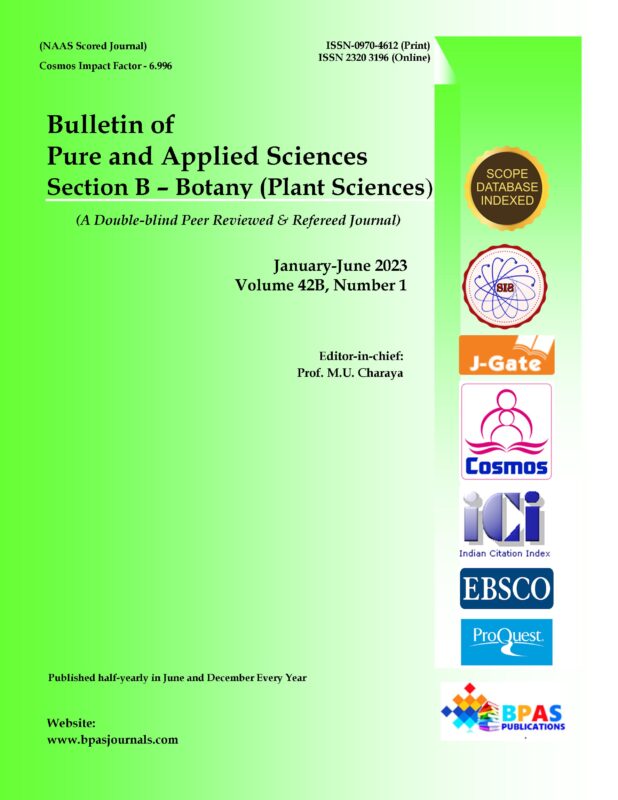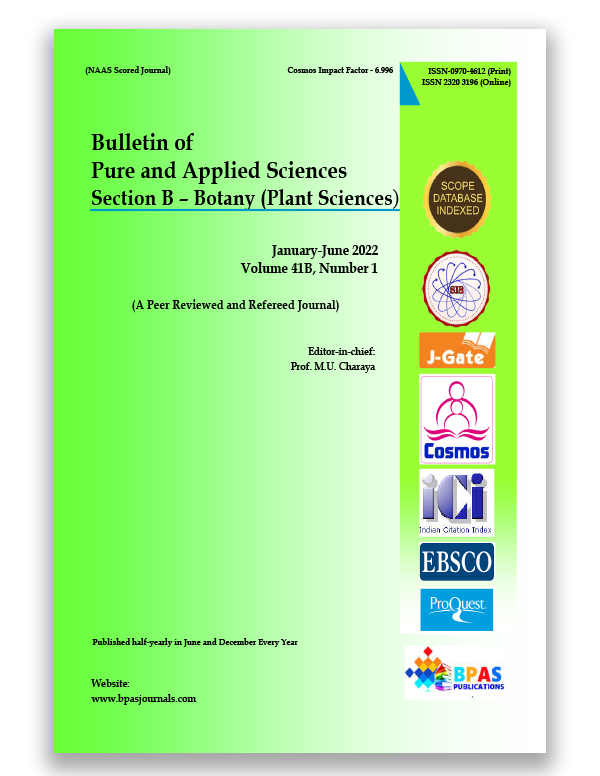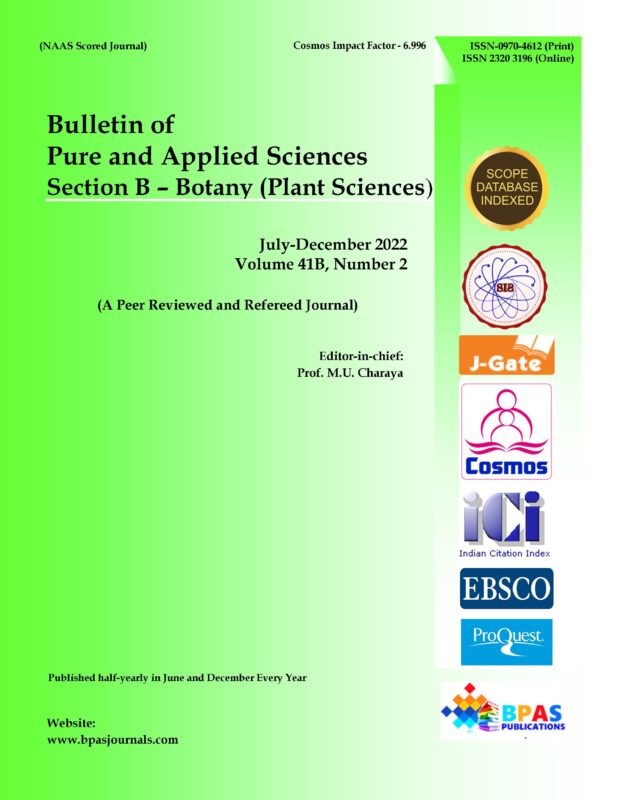GC MS – Analysis of Bio Active Compounds from Propolis and Antibacterial Activity against B.cereus Isolated from Tasar Silkworm Cadavers
9.38$
1Gudimalla Prashanthi and 2Dr. Kuntamalla Sujatha*
Bulletin of Pure and Applied Sciences.
Botany, Vol.42 B, No.2.
July-December 2023: P.65-72
Original Research Article
Description
1Gudimalla Prashanthi and 2Dr. Kuntamalla Sujatha*
Author’s Affiliation
1Research Scholar, Department of Sericulture, Kakatiya University, Warangal, Telangana 506009, India
E-mail: prashanthigudimalla@gmail.com
2Assistant Professor, Department of Sericulture, Kakatiya University, Warangal, Telangana 506009, India
E-mail: k.sujatha8900@gmail.com
*Corresponding Author:
Dr. Kuntamalla Sujatha
Assistant Professor, Department of Sericulture,
Kakatiya University, Warangal,
Telangana 506009, India
E-mail:
k.sujatha8900@gmail.com
Received on 13.08.2023
Revised on 23.10.2023
Approved on 22.11.2023
Accepted on 29.11.2023
Published on 23.12.2023





